A Conversation with Jay Tetzloff, Director of the Miller Park Zoo
- Grayson Ponti
- Dec 11, 2018
- 7 min read

@ Miller Park Zoo
Tetzloff began his zoo career as a volunteer helping the cat and bear keeper team at Omaha’s Henry Doorly Zoo. “I was hired as a summer help keeper two days after high school and went on to be a night keeper when I went to college full-time,” he noted. Later, Tetzloff would become the third keeper assigned to the Lied Jungle, the largest indoor rainforest in the entire nation. He worked with a wide variety of animals including gibbons, tapirs, pygmy hippos, clouded leopards, otters, crocodiles and a variety of birds and reptiles. Tetzloff was inspired by the vision of the zoo’s director, Dr. Lee Simmons. “Doctor Simmons is one of the smartest people I ever met,” he said. “I learned a lot [from him] about creating a modern zoo. Doc really changed Omaha’s landscape forever.”
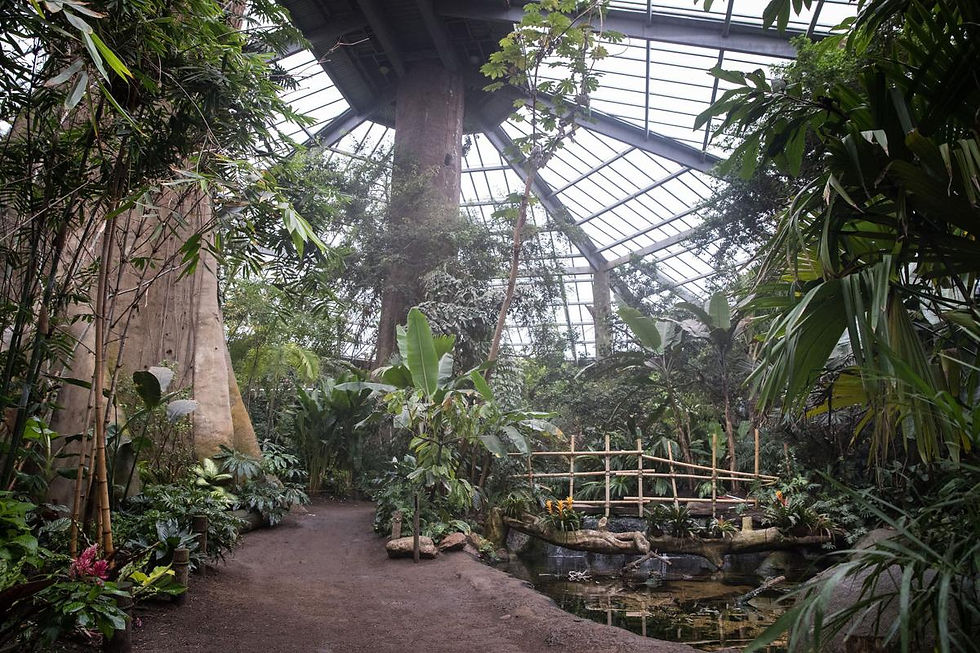
@ Omaha's Henry Doorly Zoo
Next, Tetzloff went to work at the Lincoln Children’s Zoo, a much smaller institution than Omaha. “I wanted to see how a small zoo was like,” he reflected. At the time, the zoo was evolving. “We put some cohesiveness to the collection,” Tetzloff remembered. “I was in a hodgepodge area so we switched it to being all desert animals at the front and animals from tropical areas in the back.” Soon, Tetzloff would move to the Sedgwick County Zoo in Wichita as a senior keeper in the mammal department. “I was basically a working supervisor,” he claimed. He focused on mammals in the South America, Australia and Ape sections of the zoo.

@ Lincoln Children's Zoo

@ Sedgwick County Zoo
Tetzloff learned a lot from the staff at Sedgwick County Zoo, particularly its Director Mark Reed and Curator of Mammals Mike Quick. “The two of them together probably influenced my career more than anyone else,” he articulated. “I got to see how professionals manage different. They had open and great communication but very hard working. Mark would tell me if you have attention to detail, work hard and have a good attitude, you’ll do well in this business.” Tetzloff acknowledged this advice has helped him greatly in his career.
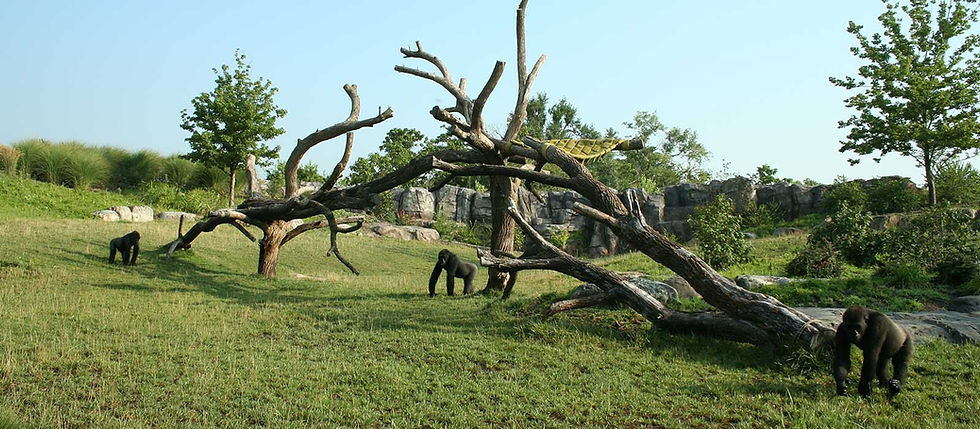
@ WDM Architects
“We put a lot of things to paper,” Tetzloff said about his time at Sedgwick County Zoo. “Every year, it seemed we put a denning box in for the Andean bear. We took the extra time to write [how we did it] out, refine the protocol and put numbers on the side of the box. I would have new staff members read all the protocols before getting trained.”

@ Sedgwick County Zoo
Realizing he would have to move elsewhere to move up, Tetzloff went to the Great Plains Zoo in Sioux Falls as Director of Animal Programs. “Mike Quick and I talked about my future and he said he planned to stay in Wichita,” he stated. “Great Plains Zoo was a chance to step up.” Tetzloff found the role to be quite an opportunity. “It had a younger keeper staff and I was able to provide some professionalism and advice to the staff,” he stated. “I had Elizabeth Whealy (the zoo’s CEO) give me a lot of freedom to have the collection I wanted for the community.”

@ Great Plains Zoo
During Tetzloff’s time at the Great Plains Zoo, the collection of animals grew dramatically. “I focused on doubling the collection while I was there,” he noted. “It was about using space better and did more mixed species habitats. We added squirrel monkeys, tamanduas, bats and quite a few amphibians. We showed the diversity that’s out there.” Vital to bringing more animals into the zoo was improving staff knowledge and expertise. “The biggest thing was pushing the professionalism, being a mentor to keeper staff and teaching them about AZA and how SSPs (Species Survival Plans) work. It’s not just like an animal shows up.” Tetzloff helped design Asian Cats, a renovation of habitats for tigers and snow leopards, and Rare Rhinos of Africa, a state-of-the-art facility for black rhinos.

@ Great Plains Zoo
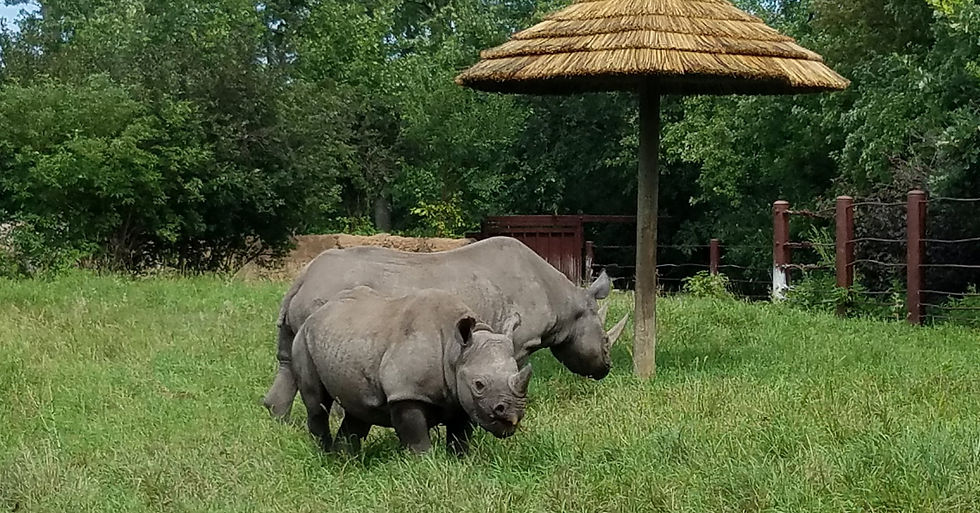
@ Great Plains Zoo
After getting a master’s degree in administration while at the Great Plains Zoo, Tetzloff began looking for opportunities to become a director. One opportunity that appealed to him was the Miller Park Zoo, a small zoo in Bloomington, Illinois. “I thought Bloomington was a good fit, was attracted to that community and wanted to stay in the Midwest,” Tetzloff recalled. “I threw my name in the ring, made the leap and here I am.” Tetzloff became Superintendent of the Miller Park Zoo in 2009 when the city was having financial difficulties. “I came here during an economic downturn and the city had gone through layoffs that hit the zoo,” he remembered. “We didn’t have a curator so I had to do the animal parts too. It was a challenge during my first year learning how to be a director.”

@ Miller Park Zoo

@ Miller Park Zoo
Tetzloff hired a curator to allow himself more time to focus on directorial duties. They began to work on making the zoo’s collection as meaningful as possible and ramped up the zoo’s breeding programs. “Every exhibit had animals in it but we didn’t maximize the potential,” he explained. “We doubled the size of the collection. We got the number of birds in the tropical building up to 70 animals. it’s a walkthrough free flight rainforest so we brought in a lot of animals for breeding potential. [The zoo had not been] doing much breeding so I brought in the aspect we would breed as much as we could with our expertise. We brought in a breeding pair of snow leopards and made modifications in the children’s zoo to bring in rare breeds, something I learned at the children’s zoo in Wichita. We brought in San Clemente Island goats, wallabies and others. We did a lot of multi-species exhibits like adding bats and cardinals together.”

@ Miller Park Zoo

@ Miller Park Zoo
To do more breeding, the Miller Park Zoo had to be more engaged in the Association of Zoos and Aquariums. “I talked about the process of SSPs (Species Survival Plans) and encouraged the staff to buy into the concept of what AZA is,” Tetzloff explained. “I brought them up to where they should be and brought more focus on training and enrichment. We implemented philosophies like doing a census in the rainforest. A lot of the staff had never seen a female cat cycle and what happens when she’s in estrus.”

@ Miller Park Zoo
Snow leopards soon became the signature animal of the Miller Park Zoo largely because of Tetzloff’s specialty in the species. “I’m in my eleventh year as SSP coordinator for snow leopards,” he remarked. “I have a snow leopard on our van that goes out to kids. We’ve really taken snow leopards as our signature animal. They’re a great conservation story to talk about as they just just came off the Endangered Species List. We’ve had two litters of snow leopards born here and I and use it to talk about the SSP."

@ Miller Park Zoo
The snow leopard SSP has the responsibility of ensuring snow leopards have a genetically diverse, self-sustaining population in North American zoos. “My role [as SSP coordinator] is to facilitate other institutions with snow leopards,” Tetzloff explained. “We have lots of great partnerships with the Snow Leopard Trust and Wildlife Conservation Society in the field. When I took over, the population was not where it should be but we’ve beefed up breeding and imported snow leopards from Europe and Japan to increase genetic diversity.” One challenge of breeding snow leopards is mating can appear violent. “We have to get keepers to understand what’s fighting and not fighting,” Tetzloff noted.

@ Miller Park Zoo
Since Tetzloff became director, a number of new animals and exhibits have been added. “We realized there are quite a few animals not [in zoos] around here,” he stated. “We want to show off a different collection for guests with different animals.” For instance, the Miller Park Zoo plan to add bushdogs as they were not found at any other zoo in Illinois. “We built a small area called Cold Blooded Hunters, where the animals are in terrariums- scorpion, tarantula, hog nosed snakes, newts, frogs,” Tetzloff said. “We can change [species] quite often and show the guests different animals.”

@ Miller Park Zoo

@ Miller Park Zoo
The Miller Park Zoo has started a conservation fund to support animals in the wild. “It is 100% driven by our guests,” Tetzloff elaborated. “We brought a wishing well that brings in good money and goes to the conservation fund. We added budgie [feeding], which is a great way for guests to engage [with animas] and raise funds.”
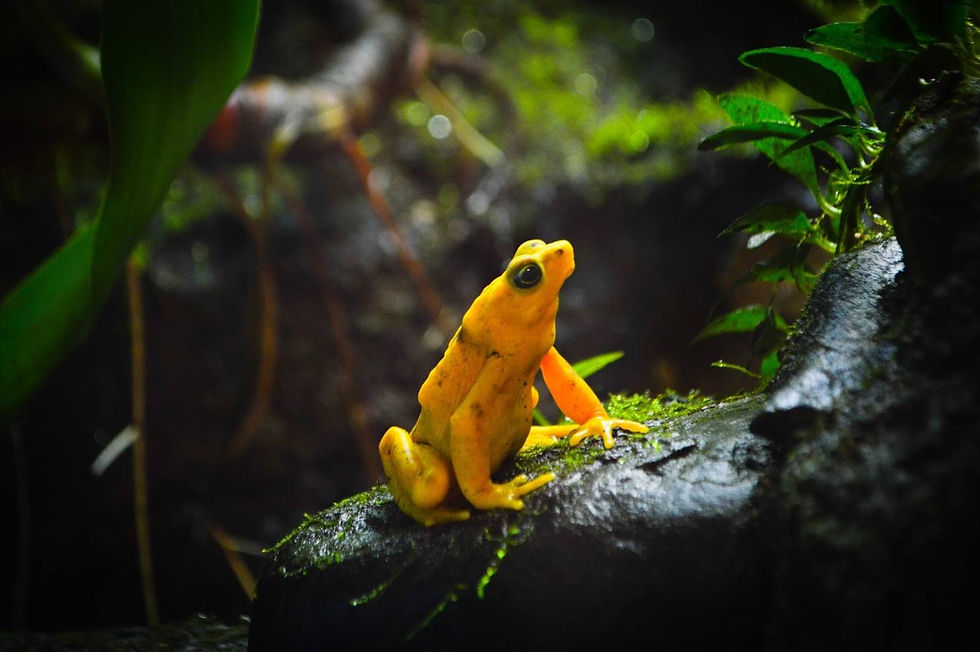
@ Miller Park Zoo

@ Miller Park Zoo
In 2016, the Miller Park Zoo opened a flamingo habitat as the first project in its ambitious master plan. “When you first walk into the zoo, you’ll see 20 plus greater flamingos,” Tetzloff stated. “While a lot of zoos have flamingos, few have greater flamingos. We have an outdoor pool and indoor pool for flamingos. We can actually filtrate the indoor pool so the flamingos have water that’s filtrated when they’re inside. That helps us conserve water.” The habitat marks a new area of exhibitry for the zoo. “It’s a step for showing guests what a modern exhibit looks like and getting people engaged in the zoo even more,” Tetzloff.
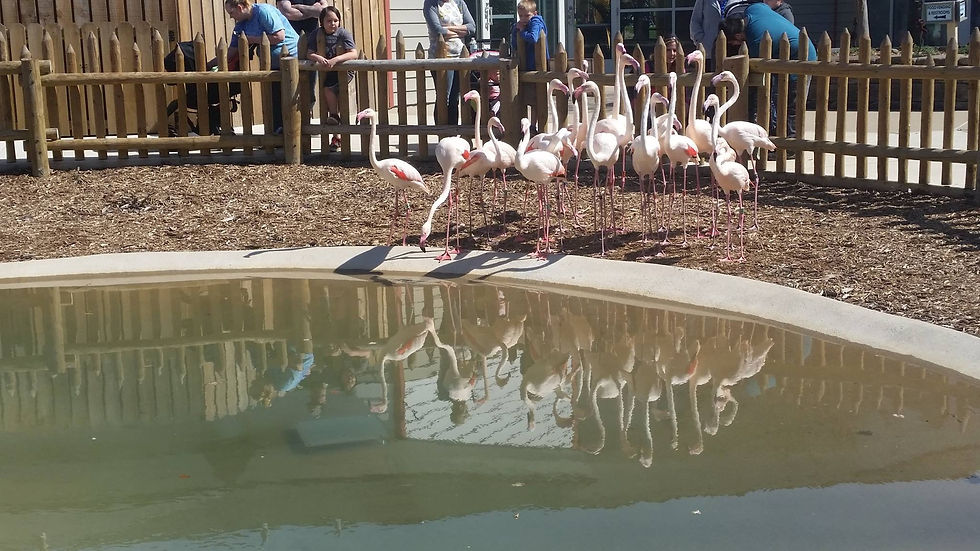
@ Miller Park Zoo

@ Miller Park Zoo
The next animal exhibit in the master plan is a South American area for bushdogs, giant anteaters, pudus and Galapagos tortoises. Additionally, the zoo will soon add a new parking lot and concession stand. “Parking, food and drink are our biggest complaints and they are a good revenue source,” Tetzloff noted. Beyond that, the master plan is even more ambitious. “We’re going to renovate the animal building from 1914, which holds a lot of our high profile species,” Tetzloff elaborated. “We’ll build new exhibits for snow leopards, cranes, muntjacs, red pandas, Pallas’ cats and eagle owls, making it temperate Asia.” The zoo also plans on bringing in new species such as orangutans and Andean bears.

@ Miller Park Zoo

@ Miller Park Zoo
“I want to make sure we stay relevant in our community and have conservation messaging at the zoo,” Tetzloff articulated. “We didn’t have that when I got here. We’re focused on breeding which lets us talk about conservation. We’re doing eastern box turtle conservation and starting a project for mudpuppies, which are a state threatened species.”

@ Miller Park Zoo
“Zoos need to be conservation organizations and promote that,” Tetzloff reflected. “I’m a big believer our populations are ambassadors. No one wants to save a snow leopard if they haven’t seen one. If you save one species, you can save all the animals in their ecosystems.” He also noted the education value of zoos and their important in getting people outside.

@ Miller Park Zoo
“One of the things I’m proud of is how I was one of the youngest zoo directors,” Tetzloff concluded. “I take pride in how quickly I was able to move up and bring my experiences together to be a zoo director. The fact I’ve been able to double the [number of] animals at two different zoos is special. I’m not showing elephants but all different kinds of frogs and tamarins.”

@ Jay Tetzloff






Comments